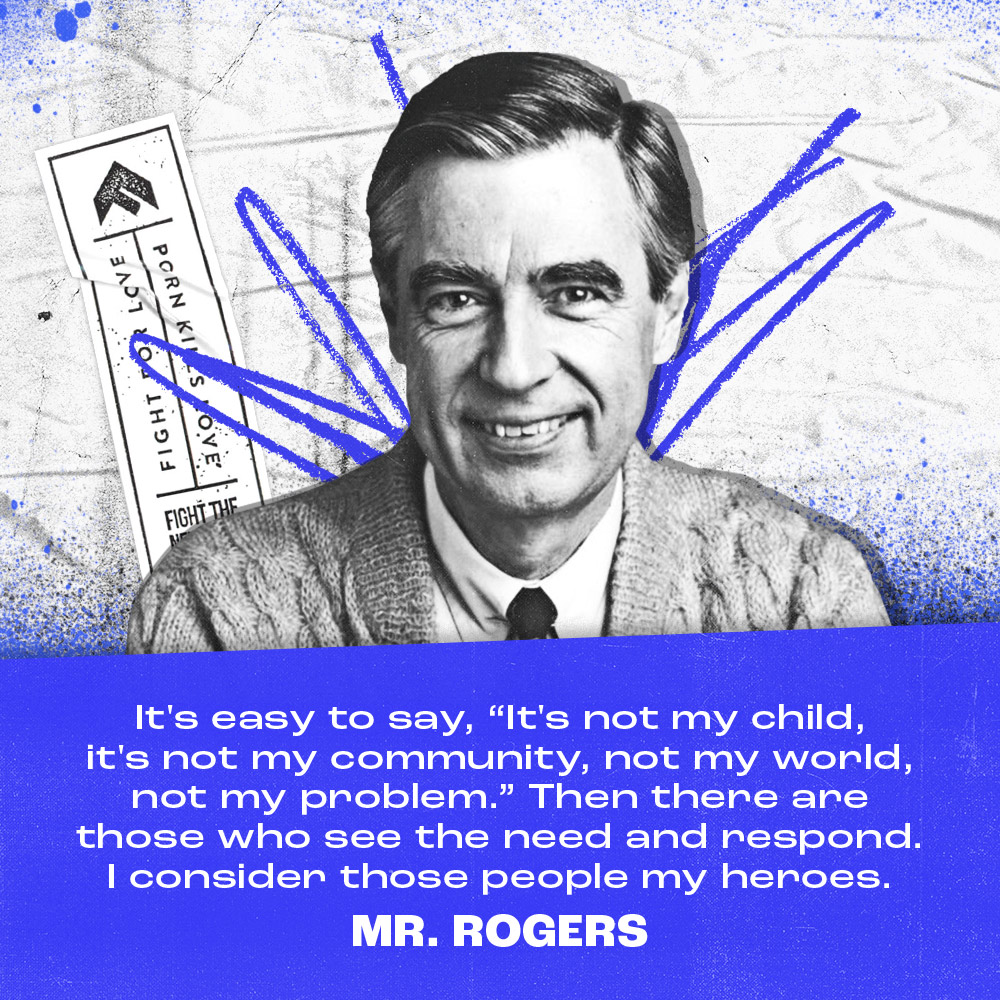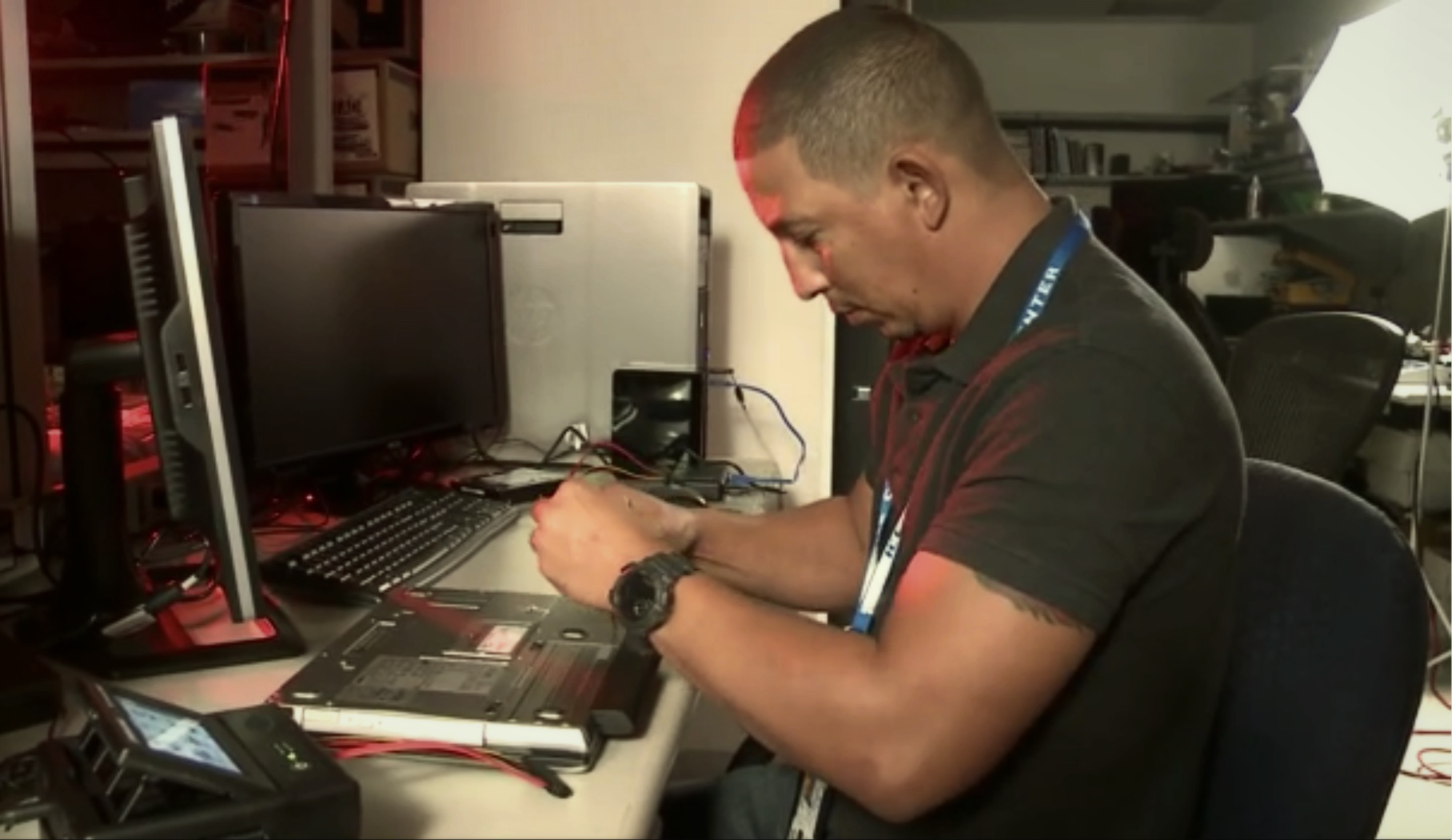Cover photo from The H.E.R.O. Child-Rescue Corps website. 5 minute read.
Disclaimer: Some of the issues discussed in the following article are legislatively-affiliated. Fight the New Drug is a non-religious and non-legislative awareness and education organization hoping to provide access to resources that are helpful to those who need support. Including links and discussions about these legislative matters does not constitute an endorsement by Fight the New Drug.
The recording and distribution of child sexual abuse images, or “child porn” as it’s known, is a huge global problem. But thankfully, action is being taken to fight back.
It’s virtually impossible to calculate the extent of the abuse because it is so globalized and takes so many forms, but here’s a little bit of context: a couple of years ago, the Canadian Center for Child Protection launched a trial run of Project Arachnid, a program designed to recognize webpages hosting, promoting, or displaying content depicting the sexual abuse of children. In six weeks, Project Arachnid analyzed 230 million web pages, located 5.1 million with pedophile material, and identified 40,000 abuse images that hadn’t been found before. That means over 2% of all websites processed in the study trafficked in child pornography, and that number doesn’t account for any offline activity whatsoever.
The Internet Watch Foundation, an organization dedicated to reducing the availability of online sexual abuse content, uses a team of analysts that finds a website displaying child sexual abuse every nine minutes. The National Center For Missing And Exploited Children estimates that at least 100,000 children every year are victims of sexual exploitation.
Clearly, this is a huge problem in our society, and it only seems to be growing.
A new frontier to fight
All these numbers are pretty shocking, and they can make the fight against child sexual exploitation seem hopeless.
Thankfully, that’s not the case. There are plenty of people and organizations who aren’t willing to throw in the towel, some of which are the toughest men and women on the planet.
Enter Human Exploitation Rescue Operative Child-Rescue Corps (HERO Corps), a small program run by US Immigration and Customs Enforcement (ICE). The HERO Corps has a unique mission: training injured, wounded, and sick U.S. military veterans to be on a new frontline—the fight against online child sexual exploitation.
Related: Understanding The Booming Underground Industry Of Child Sexual Exploitation
In the 11-week HERO Corps program, veterans receive a crash course in computer forensics and criminal justice—how to process a hard drive, identify a suspect, and build a criminal case against them.
After the initial program, they’re then assigned to ICE branches around the country, where they complete a year-long internship that makes them eligible for continued employment as a certified child-porn fighter. How cool is that?
Bringing back hope
The HERO Child-Rescue Corps is the ultimate “two birds, one stone” program. It provides support and purpose for returning veterans suffering from physical and mental injuries. Chris Wooten, a graduate of a recent HERO program, says that working to stop child porn and sexual abuse has helped return “a sense of pride” that he’d struggled to find since he left the military seven years ago.
“This job, I’m actually going out and saving kids and stopping bad guys, and help putting bad guys behind bars,” he said.
Don’t think for a second that the work is easy, though. After employment, going to work every day means looking at graphic and horrifying images of child sexual exploitation and abuse. It’s tough, but Wooten says being “able to handle the images” is another “source of pride.”
Shannon Krieger, another wounded veteran who’s gone through the HERO program, says, “As a new dad, I would want someone just like me going after these guys, so here I am, and here we are.”
Porn and sexual abuse are linked
The more we learn about the extent of child porn and sexual abuse, and the damage it causes to children, families, and society as a whole, the more important programs like the HERO Child-Rescue Corps become.
Related: Letter From A Sex Offender: How I Went From Vanilla Porn To Child Porn
Take this personal account from a Fighter as an example of what countless people are dealing with:
“My husband let his addiction grow to the point where he didn’t just watch child porn, he produced it. Of his own child, and he abused him and others. I promise you, this man did not start out this kind of person, anyone who knows how was shocked at this discovery. He became this person! He won’t see his amazing children grow up. He’s lost the love and trust of a good woman who would have given him anything. He has broken countless hearts. The effects of his choices will not cease.” -R.
The story above is an extreme one, but interest in child porn happens more often than you’d believe. So, who is actually looking at these horrific images?
Regular porn consumption can escalate
The New York Times reported that, by some estimates, 1% of the male population continues, long after puberty, to find themselves attracted to prepubescent children. One percent doesn’t sound like much, but it adds up to over 1.1 million men (women are very rarely ever diagnosed with pedophilia) possibly living with this disorder just in the United States. These people are living with pedophilia, a sexual attraction to prepubescents that often constitutes a mental illness. While some child porn consumers can be classified as having this diagnosable disorder, others find themselves attracted to pedophilic content after years of interest in legal porn.
Related: Police Arrest Man For Using Neighbor’s WiFi To Distribute Over 33,000 Child Porn Images
Dr. Julie Newberry is a psychologist who has worked with patients who fall into this category. In an article for PsychReg, she writes:
“My therapeutic experience is that a person who views child abuse images, though committing a sexual offense, is not necessarily a pedophile. A pedophile has a primary sexual interest in children. I suggest that for some people, it is porn addiction rather than pedophilia, which is the cause. A person, usually a man, who has no sexual interest in children, can find himself ‘crossing the line.’”
Bottom line? Sometimes, a porn habit can get wildly out of control and go down a path a consumer could never have anticipated.
It’s encouraging to see something like the HERO Child-Rescue Corps, which gives wounded vets a real sense of purpose and helps combat child porn at the same time.
These are the kind of proactive programs that we need to effectively fight child porn, and we applaud the veterans who are taking on a new challenge to make the world a better, safer, and happier place for all of us.

Your Support Matters Now More Than Ever
Most kids today are exposed to porn by the age of 12. By the time they’re teenagers, 75% of boys and 70% of girls have already viewed itRobb, M.B., & Mann, S. (2023). Teens and pornography. San Francisco, CA: Common Sense.Copy —often before they’ve had a single healthy conversation about it.
Even more concerning: over half of boys and nearly 40% of girls believe porn is a realistic depiction of sexMartellozzo, E., Monaghan, A., Adler, J. R., Davidson, J., Leyva, R., & Horvath, M. A. H. (2016). “I wasn’t sure it was normal to watch it”: A quantitative and qualitative examination of the impact of online pornography on the values, attitudes, beliefs and behaviours of children and young people. Middlesex University, NSPCC, & Office of the Children’s Commissioner.Copy . And among teens who have seen porn, more than 79% of teens use it to learn how to have sexRobb, M.B., & Mann, S. (2023). Teens and pornography. San Francisco, CA: Common Sense.Copy . That means millions of young people are getting sex ed from violent, degrading content, which becomes their baseline understanding of intimacy. Out of the most popular porn, 33%-88% of videos contain physical aggression and nonconsensual violence-related themesFritz, N., Malic, V., Paul, B., & Zhou, Y. (2020). A descriptive analysis of the types, targets, and relative frequency of aggression in mainstream pornography. Archives of Sexual Behavior, 49(8), 3041-3053. doi:10.1007/s10508-020-01773-0Copy Bridges et al., 2010, “Aggression and Sexual Behavior in Best-Selling Pornography Videos: A Content Analysis,” Violence Against Women.Copy .
From increasing rates of loneliness, depression, and self-doubt, to distorted views of sex, reduced relationship satisfaction, and riskier sexual behavior among teens, porn is impacting individuals, relationships, and society worldwideFight the New Drug. (2024, May). Get the Facts (Series of web articles). Fight the New Drug.Copy .
This is why Fight the New Drug exists—but we can’t do it without you.
Your donation directly fuels the creation of new educational resources, including our awareness-raising videos, podcasts, research-driven articles, engaging school presentations, and digital tools that reach youth where they are: online and in school. It equips individuals, parents, educators, and youth with trustworthy resources to start the conversation.
Will you join us? We’re grateful for whatever you can give—but a recurring donation makes the biggest difference. Every dollar directly supports our vital work, and every individual we reach decreases sexual exploitation. Let’s fight for real love:




